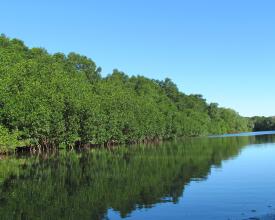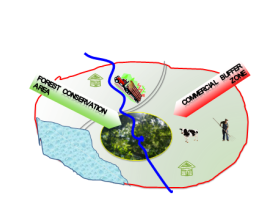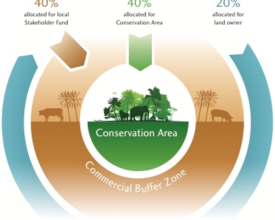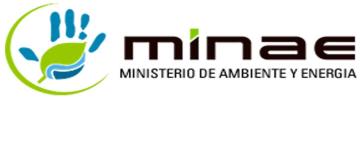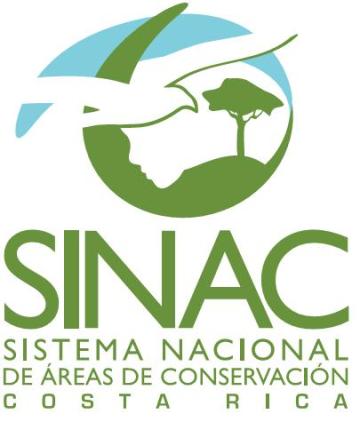
Inversión del sector privado en la conservación de los bosques secos y la restauración de los manglares
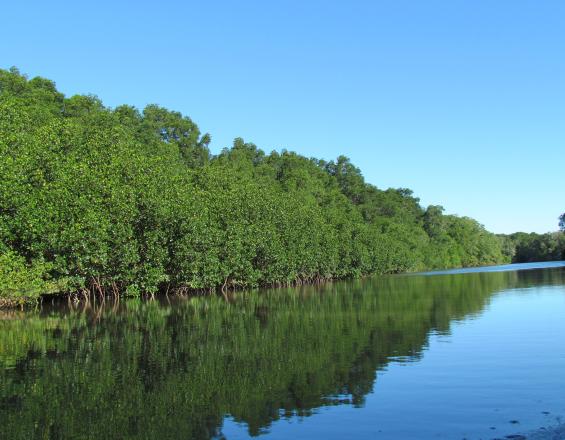
El Estándar Global de Conservación (GCS) es un mecanismo financiero innovador. Se trata de un sistema de pagos por servicios ecosistémicos financiado por el sector privado: las empresas compran créditos de conservación y los ingresos generados son gestionados por una ONG costarricense para invertirlos en actividades de desarrollo sostenible. Un ejemplo es la inversión de un productor alemán de camarones orgánicos certificados en Costa Rica que compra créditos de conservación para restaurar manglares. Los camarones orgánicos son vendidos en Alemania por minoristas orgánicos certificados - por cada 250g vendidos 0,15€ son canalizados al GCS Fund y utilizados para actividades de conservación.
Contexto
Défis à relever
- Conservación de los bosques costeros
- Restauración de manglares
- Resiliencia y sostenibilidad de los ecosistemas marinos y costeros
- Adaptación basada en los ecosistemas para hacer frente a la vulnerabilidad al cambio climático
- Financiación sostenible
Ubicación
Procesar
Resumen del proceso
Los componentes básicos pueden considerarse fases para lograr la aplicación de un mecanismo financiero basado en una norma internacional de conservación identificada: identificación de la norma, planificación y aplicación del mecanismo. La identificación y aplicación de un mecanismo financiero garantiza una gestión eficaz y requiere una planificación conjunta entre las principales partes interesadas. La planificación y la gestión deben contar con información actualizada sobre las diferentes opciones y las lecciones aprendidas a nivel nacional e internacional. La participación de los principales actores en cada fase es importante ya que son ellos los que aplicarán la norma de conservación de los recursos naturales.
Bloques de construcción
La Norma Mundial de Conservación
El Estándar Global de Conservación (GCS) certifica los servicios ecosistémicos en zonas forestales/protegidas de propiedad pública y privada para la compensación y comercialización de carbono. Los fondos generados con la venta de unidades de crédito para la conservación (CCU) de la zona forestal se invierten en la conservación y el fomento de la producción sostenible en la zona del proyecto, que se divide en una zona de conservación y otra de amortiguación con actividad comercial.
Factores facilitadores
- Se dispone de asistencia técnica y financiera de los socios del proyecto para realizar estudios de viabilidad previa a la aplicación de la norma.
- Los acuerdos de consentimiento y conservación entre las partes fomentan la sostenibilidad de los ecosistemas.
Lección aprendida
- Es importante realizar un examen exhaustivo de las normas internacionales para identificar las áreas en las que es posible aplicar una norma de conservación.
- La selección de una norma define y orienta todo el proceso de establecimiento posterior.
- La información recopilada en la revisión de las normas se utiliza en los debates con las partes interesadas, así como con los posibles inversores nacionales / locales, con el fin de proporcionar una base sólida para la selección informada de mecanismos para financiar la conservación de los recursos costeros y marinos.
Estudio de viabilidad y validación de beneficios
Se realiza una evaluación guiada de las zonas forestales aptas para la venta de unidades de crédito para la conservación (CCU) en la región prevista con el Estándar Mundial de Conservación (GCS). La elaboración de un plan maestro esboza el área del proyecto y su potencial para vender CCU (basándose en los criterios de la CIPF). Todas las intervenciones se definen mediante una planificación participativa (cálculo generación de créditos, beneficiarios, comercialización). Una vez aceptado el masterplan por la GCS, se realiza el registro internacional en Markit.
Factores facilitadores
- Información científica disponible
- Orientación técnica, desarrollo de capacidades y apoyo financiero de los organismos donantes
- Voluntad política de los propietarios gubernamentales y privados para cooperar y establecer un Comité Directivo con representación de los sectores público y privado
- Participación de FUNDECODES, una organización no gubernamental local reconocida por las partes interesadas.
- La aplicación de la GCS no está vinculada a ninguna transferencia de propiedad
- No hay restricciones de elegibilidad por tipo de paisaje o zona geográfica
Lección aprendida
- Acordar y establecer objetivos comunes es fundamental para la planificación participativa y la apropiación del proyecto por parte de los actores locales, lo que favorece el desarrollo de propuestas dirigidas a mitigar los impactos producidos por las prácticas productivas.
- Cuando la comunidad lidera el desarrollo local de medidas de conservación, se reducen las presiones sobre el manglar, favoreciendo la resiliencia y, por tanto, la salud de los servicios ecosistémicos de la zona.
- La aceptación del proyecto depende de la percepción positiva por parte de los actores locales.
Comercialización de unidades de crédito de conservación (UCC)
El administrador del fondo, la ONG FUNDECODES, y otros intermediarios promueven las CCU entre los inversores, que las compran a un plazo mínimo de diez años. Los rendimientos de las CCU se distribuyen para su uso en las distintas zonas del área del proyecto: 40% para actividades de conservación en la zona núcleo, 40% para actividades de producción sostenible en la zona de amortiguación comercial y 20% para los propietarios de las tierras generadoras de crédito.
Factores facilitadores
- Acuerdo de conservación entre FUNDECODES y Global Conservation Standard (GCS)
- La legislación vigente permite valorar y vender créditos de conservación
- Actores institucionales que se comprometen a trabajar con el sector privado y la sociedad civil
- Sector privado dispuesto a compensar voluntariamente
- Intermediación: Puesta en contacto de la oferta y la demanda, por ejemplo, compradores y vendedores de CCU.
Lección aprendida
- Las partes interesadas se ven reforzadas por el sistema de financiación porque reciben apoyo financiero para llevar a cabo actividades de conservación y participan en la toma de decisiones y el establecimiento de prioridades.
- El proyecto es reconocido como modelo por las autoridades de conservación porque aplica una norma de sostenibilidad ambiental con el apoyo de socios fuertes.
- Existe un gran interés entre el sector privado costarricense por compensar el CO2.
- Los inversores internacionales están interesados en la diligencia debida y la plena rendición de cuentas a la hora de comprar CCU. Esto lo garantiza la GCS recurriendo a organismos independientes acreditados para realizar evaluaciones anuales de las reservas de carbono, manteniendo la objetividad, la precisión y la transparencia y ofreciendo imágenes SIG en tiempo real.
- Sigue siendo necesario mejorar la capacidad de FUNDECODES y SINAC en materia de comercialización, corretaje, establecimiento del sistema MRV y gestión adecuada de los "Fondos para pequeños proyectos".
Aplicación y seguimiento
En 2015 y 2016 se firmaron acuerdos contractuales con las empresas alemanas RISTIC GmbH y ALNATURA (50.000,00 USD cada una). FUNDECODES, la organización vendedora de la Unidad de Crédito para la Conservación (CCU) ASEPALECO y la Autoridad Nacional de Áreas Protegidas de Costa Rica (SINAC) son responsables de la implementación del proyecto de restauración y conservación y acordaron contractualmente objetivos a 10 años. FUNDECODES rinde cuentas anualmente a la empresa compradora de la CCU, RISTIC GmbH. Todo el proceso es supervisado anualmente por Globale Conservation Standards (GCS).
Factores facilitadores
- FUNDECODES ha contado con el apoyo de la GIZ en el desarrollo de una estrategia de marketing para vender CCU a nivel nacional e internacional.
- La GIZ ha proporcionado asesoramiento a GCS, Ristic GmbH, para implementar el marketing y el MRV.
Lección aprendida
Después de 3 años de apoyo técnico y financiero de la GIZ a todo el proceso, FUNDECODES ha alcanzado la plena titularidad y responsabilidad para gestionar el proceso por sí misma.
Impactos
El Global Conservation Standard (GCS) proporciona recursos financieros adicionales para actividades de conservación y desarrollo económico a escala local. Los fondos generados por la venta de unidades de crédito para la conservación ascienden a 100.000 dólares (otros 40.000 dólares están en negociación con empresas internacionales y nacionales). Los fondos se invierten en la restauración de 20 ha de manglar, la conservación de la reserva forestal privada Karen Mogensen y la puesta en marcha de un proyecto de producción de hones de pequeño tamaño.
Beneficiarios
- Comunidades locales (Jicaral, Nandayure, Lepanto)
- Ministerio de Ambiente y Energía (MINAE), Costa Rica
- Sistema Nacional de Áreas de Conservación (SINAC), Costa Rica
Objetivos de Desarrollo Sostenible
Historia
En las comunidades adyacentes a la zona de manglares muchas personas se dedican a la pesca de moluscos. En los últimos años, sin embargo, sólo se pueden encontrar pocos moluscos y de menor tamaño. Esta disminución se debe a la sobreexplotación y degradación del hábitat natural del manglar, causada, por ejemplo, por la agricultura intensiva y otras actividades humanas en la zona, que provocan un elevado aporte de sedimentos y nutrientes procedentes de los ríos. El cambio climático también contribuye a la degradación, ya que están cambiando los patrones meteorológicos, las mareas y la cantidad de precipitaciones. Todo ello disminuye la productividad del ecosistema de manglares.
Doña Francisca vive junto a los manglares. Para ganarse la vida vende moluscos que recoge en los manglares y cerdos que cría en los alrededores de su casa. Espera que con el nuevo mecanismo de financiación, la Norma Mundial para la Conservación (NGC), su situación mejore. Según este nuevo mecanismo, una zona de bosque privado costero funciona como zona núcleo que generará Unidades de Crédito para la Conservación (CCU), que se venden. El 40% de los ingresos se destina a la gestión de la zona forestal núcleo para aplicar planes de gestión centrados en la protección, así como en actividades de adaptación y mitigación, que ayuden a mantener y restaurar las funciones del ecosistema. El 20% de los ingresos se entrega al propietario del bosque para su uso discrecional. El 40% restante se invierte en la zona de amortiguación comercial (ZAC), que en este caso incluye la rehabilitación de los manglares y sus servicios ecosistémicos.
Con el apoyo de las comunidades locales y otras partes interesadas locales se llevan a cabo las acciones de rehabilitación previamente acordadas con las autoridades nacionales de conservación. Esto significa que Doña Francisca y sus compañeros recolectores de moluscos pueden beneficiarse del programa ayudando ellos mismos a rehabilitar los manglares cuidando de los viveros de mangle y trabajando en la restauración del flujo natural de agua, todo lo cual se espera que conduzca a una recuperación de las poblaciones de moluscos. Esto les proporcionará unos ingresos más sostenibles a largo plazo y opciones de ingresos alternativas.
